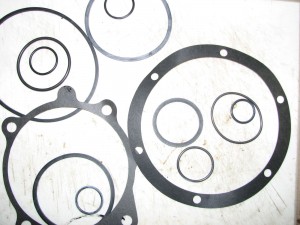My buddy is a real aggressive driver and when he backs up he just slams it into drive while going backwards. That’s a bad move with automatic transmissions. I hesitate to advise him, I think he might take it the wrong way. We are friends and I only advise customers or readers of my blog. Basically he is an aggressive force on the road. It’s hard on a vehicle to drive it aggressively all the time.
In his defense, he takes impeccable care of it. Has it detailed every 2 weeks, does service and maintenance right on schedule every time. He also gets it fixed asap when it needs repair service. I want to speak on the issues of slamming a vehicle in drive before you stop going backwards.
The particular design of the transmission in his 2005 Ford F-150 is susceptible to a breakage issue when driven this way. Speaking of design issues, we are talking about how the different components apply and hold each gear until it is time to release and change gears. Band type transmissions use ”brake bands” which tighten around a spinning drum to stop the drum when the brake band is applied or squeezed.
When the transmission (4R55E) is in (D) drive, the forward clutch plates are holding and the input sprag clutch is holding. Lets say you decide to put the vehicle in low (L) gear to take off, well in that case, the low/reverse band applies as well, which adds a lot of extra holding power under extreme towing or pulling circumstances. Which is nice to know and also can save a major transmission failure under extreme circumstances.
So, when you are in (D) drive only the forward clutches and forward sprag clutch work and in (L) low we have an additional holding device, the low/reverse band applying, thus adding more capacity to your transmission. When a driver slams a car or truck into drive while still rolling backwards, the input sprag is stressed out beyond it’s capacity.
In order to eliminate some avoidable transmission failures, understand that the extra 5 seconds it takes to fully stop and engage drive while at a stop is a good tip to practice on any car. If you have a truck or are in a difficult position when taking off, pull the shift lever into (L) low and use the extra holding power to your advantage.
Use this transmission tip and others located throughout our blog to help reduce the chances of a transmission failure. Our specialty is supplying transmissions to replace broken or worn out units. We enjoy providing tips and solid helpful information to help prevent transmission problems.
Please read more of our blog, if you arrived here because you are looking for a transmission for sale, allow us to educate you in a manner that will give you the power to decide which transmission is in your best interests, that is our main goal. Ask about our extensive warranty plans and don’t forget that some of our transmissions ship free of cost. Getting you the product ASAP so you can back on the road is our second most important goal.








